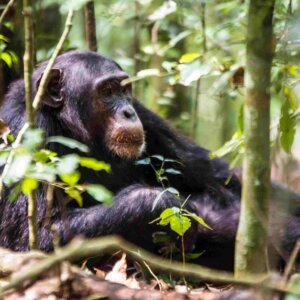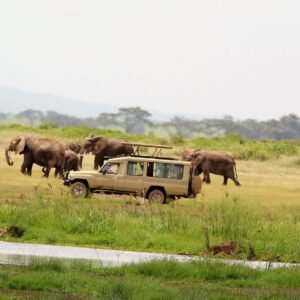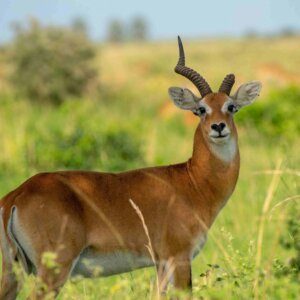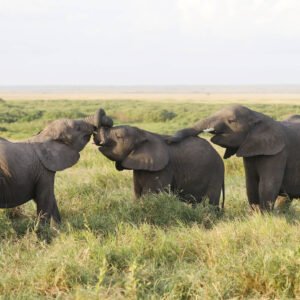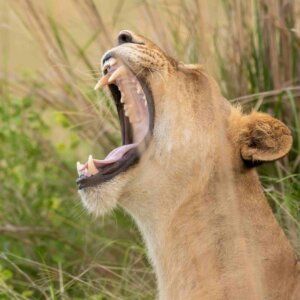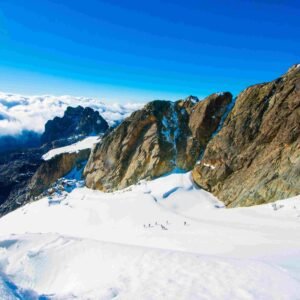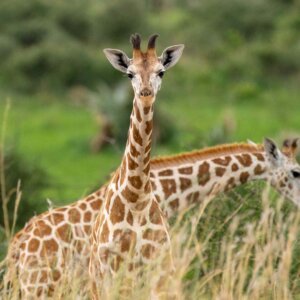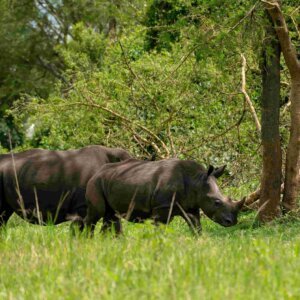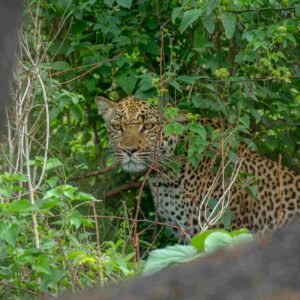Or try one of the following: 詹姆斯.com, adult swim, Afterdawn, Ajaxian, Andy Budd, Ask a Ninja, AtomEnabled.org, BBC News, BBC Arabic, BBC China, BBC Russia, Brent Simmons, Channel Frederator, CNN, Digg, Diggnation, Flickr, Google News, Google Video, Harvard Law, Hebrew Language, InfoWorld, iTunes, Japanese Language, Korean Language, mir.aculo.us, Movie Trailers, Newspond, Nick Bradbury, OK/Cancel, OS News, Phil Ringnalda, Photoshop Videocast, reddit, Romanian Language, Russian Language, Ryan Parman, Traditional Chinese Language, Technorati, Tim Bray, TUAW, TVgasm, UNEASYsilence, Web 2.0 Show, Windows Vista Blog, XKCD, Yahoo! News, You Tube, Zeldman
Budget Travel in Uganda 12 Dec 2023, 3:39 am
Uganda is a land of contrasts, where lush green forests meet arid savannahs, where snow-capped mountains overlook volcanic lakes, and where endangered mountain gorillas share their habitat with tree-climbing lions. Winston Churchill famously called Uganda “the pearl of Africa” for its natural beauty and cultural diversity. But is it possible to travel Uganda on a budget? The answer is yes, if you know how to plan your trip and where to look for the best deals. In this guide, we will explore some of the ways you can save money while traveling in Uganda, without compromising on the quality of your experience.
Introduction to Uganda
Uganda is a landlocked country in East Africa, bordered by Kenya, Tanzania, Rwanda, the Democratic Republic of Congo, and South Sudan. It covers an area of about 241,000 square kilometers (93,000 square miles), which is roughly the size of Oregon or the United Kingdom. Uganda has a population of about 45 million people, belonging to over 50 ethnic groups and speaking over 40 languages. The official languages are English and Swahili, but many people also speak Luganda, Runyankole, or other local languages.
Uganda’s geography is diverse and varied, ranging from the low-lying shores of Lake Victoria (the largest lake in Africa and the source of the Nile River) to the high peaks of the Rwenzori Mountains (the third highest mountain range in Africa). Uganda is home to 10 national parks and 12 wildlife reserves, which protect some of the most endangered and unique wildlife species in the world, such as mountain gorillas, chimpanzees, elephants, rhinos, hippos, crocodiles, zebras, giraffes, and more. Uganda is also known for its rich cultural heritage, which includes ancient kingdoms, colonial history, vibrant festivals, colorful markets, and friendly people.
Uganda is a year-round destination, but the best time to visit depends on what you want to see and do. The dry seasons are from December to February and from June to August, which are ideal for wildlife viewing and hiking. The wet seasons are from March to May and from September to November, which are good for birdwatching and rafting. The average temperature in Uganda is about 25°C (77°F), but it can vary depending on the altitude and region. The average visa cost for Uganda is $50 USD for a single-entry tourist visa valid for 90 days. You can apply online or at the border.
Popular Budget Uganda Safaris
-
10 Day Uganda Safari Wildlife, Gorillas and Chimpanzees
-
11 Day Kenya Wildlife & Uganda Gorilla Safari
-
12 Ultimate Uganda Safari Holiday
-
13 Day Best of Uganda & Kenya Safari
-
13 Day Kenya, Uganda Wildlife & Primates Safari
-
14 Day Rwenzori Hike, Wildlife & Gorilla Trekking Safari
-
15 Day Uganda Safari, Adventure & Wildlife
-
17 Day Ultimate Uganda Wildlife & Primates Safari
-
20 Day Uganda Safari (All Major National Parks)
Budget-Friendly Accommodation
One of the biggest expenses when traveling in Uganda is accommodation. However, there are plenty of options for budget travelers who are looking for a comfortable and safe place to stay. Here are some of the most common types of accommodation in Uganda and their average prices:
- Hostels: Hostels are a great way to meet other travelers and save money on accommodation. They usually offer dorm beds or private rooms with shared bathrooms and facilities. Some hostels also have common areas, kitchens, gardens, or bars where you can socialize and relax. The average price for a hostel bed in Uganda is about $10 USD per night.
- Guesthouses: Guesthouses are similar to hostels but more family-friendly and less party-oriented. They usually offer private rooms with ensuite or shared bathrooms and facilities. Some guesthouses also have restaurants or cafes where you can enjoy local food and drinks. The average price for a guesthouse room in Uganda is about $15 USD per night.
- Camping: Camping is another option for budget travelers who want to get closer to nature and enjoy the outdoors. You can either bring your own tent or rent one from a campsite or lodge. Some campsites also have shared bathrooms and facilities. The average price for a camping spot in Uganda is about $5 USD per night.
Some tips for finding the best deals on accommodation in Uganda are:
- Book online: You can use websites like Booking.com or Hostelworld.com to compare prices and reviews of different accommodation options in Uganda. You can also find discounts or deals if you book in advance or for longer stays.
- Negotiate: You can try to negotiate the price of your accommodation if you book directly with the owner or manager. You can also ask for discounts if you pay in cash or if you are traveling during low season or weekdays.
- Be flexible: You can save money on accommodation if you are flexible with your dates, location, or preferences. You can also look for alternative options like couchsurfing or homestays where you can stay with locals for free or for a small fee.
Transportation Options
Another major expense when traveling in Uganda is transportation. However, there are various transportation options for budget travelers within Uganda, including public buses, shared taxis, and motorcycle taxis (boda bodas). Here are some of the pros and cons of each option and their average prices:
- Public buses: Public buses are the cheapest and most direct way to get to major destinations in Uganda. They usually run on fixed routes and schedules, and stop at designated bus stations or terminals. They are also relatively comfortable and safe, as they have seats, windows, and luggage compartments. The average price for a public bus ticket in Uganda is about $5 USD per 100 kilometers (62 miles).
- Shared taxis: Shared taxis are also known as matatus or minibuses. They are a common and convenient way to get around Uganda, especially for shorter distances or remote areas. They usually run on flexible routes and schedules, and stop anywhere along the way. They are also faster and more comfortable than public buses, as they have air conditioning, music, and fewer passengers. The average price for a shared taxi fare in Uganda is about $1 USD per 10 kilometers (6 miles).
- Motorcycle taxis: Motorcycle taxis are also known as boda bodas or piki pikis. They are the fastest and most fun way to get around Uganda, especially in urban areas or traffic jams. They usually run on demand and can take you anywhere you want. They are also the most adventurous and risky way to travel in Uganda, as they have no helmets, seat belts, or insurance. The average price for a motorcycle taxi ride in Uganda is about $0.5 USD per 5 kilometers (3 miles).
Some tips for saving money on transportation in Uganda are:
- Use public transportation: You can use public transportation as much as possible to save money on transportation in Uganda. You can also use apps like Google Maps or Moovit to plan your routes and find the best options for your destination.
- Bargain: You can bargain the price of your transportation if you use shared taxis or motorcycle taxis. You can also ask for discounts if you travel with a group or if you use the same driver multiple times.
- Be safe: You can be safe when traveling in Uganda by following some basic rules. You can avoid traveling at night or in bad weather, wear a seat belt or a helmet, carry your valuables with you, and check the condition of the vehicle before boarding.
Money-Saving Tips
Besides saving money on accommodation and transportation, there are other ways you can save money while traveling in Uganda. Here are some practical tips and tricks for traveling in Uganda on a budget:
- Bargain: Bargaining is a common practice in Uganda, especially in markets, shops, or street stalls. You can bargain the price of anything from souvenirs, clothes, food, or services. You can start by offering half of the asking price and then work your way up until you reach a fair deal.
- Use local markets: Local markets are the best places to find cheap and fresh food and souvenirs in Uganda. You can buy fruits, vegetables, bread, cheese, meat, eggs, or spices from local farmers or vendors. You can also buy handicrafts, jewelry, fabrics, or art from local artisans or traders.
- Take advantage of free or low-cost activities: There are many free or low-cost activities you can enjoy in Uganda that will enrich your travel experience. You can visit museums, churches, mosques, monuments, or gardens that have no or minimal entrance fees. You can also hike, bike, swim, fish, or birdwatch in natural parks or reserves that have low or affordable conservation fees.
Conclusion
Uganda is a beautiful and diverse country that offers a lot of opportunities for adventure and discovery. It is also a budget-friendly destination that can be traveled without breaking the bank. By following some of the tips and tricks we shared in this guide, you can plan your trip and enjoy your stay in Uganda without spending a fortune.
The post Budget Travel in Uganda appeared first on Uganda Safari Tours.
Adventure Travel in Uganda 12 Dec 2023, 3:24 am
Nestled in the heart of East Africa, Uganda is a hidden gem that beckons adventure seekers from around the world. With its diverse geography, rich culture, and captivating history, this enchanting country offers a plethora of unique attractions for those craving an adrenaline-pumping experience. Join us as we embark on an exhilarating journey through Uganda’s untamed wilderness, encountering mountain gorillas, navigating raging rapids, and immersing ourselves in the vibrant local culture.
Mountain Gorilla Trekking
Imagine standing face to face with the majestic mountain gorillas, staring into their soulful eyes as they go about their daily routines. Bwindi Impenetrable National Park and Mgahinga Gorilla National Park provide unparalleled opportunities for an awe-inspiring encounter with these endangered creatures. Trek through dense forests, following expert guides, and witness the magic of observing gorillas in their natural habitat.

White Water Rafting on the Nile
Prepare for an adrenaline rush like no other as you conquer the mighty Nile River’s rapids in Jinja. With its world-class rafting facilities, Uganda offers an unforgettable white water rafting experience, combining heart-pounding adventure with breathtaking scenery. Brace yourself for thrilling drops, whirlpools, and exhilarating rapids, as you navigate the Nile’s powerful currents.

Chimpanzee Trekking
Venture into the lush rainforests of Kibale National Park or Budongo Forest and embark on an extraordinary chimpanzee trekking adventure. Traverse winding trails, listening for the distinctive calls of our primate cousins. Watch in awe as playful chimpanzees swing through the trees above, displaying their incredible acrobatic skills. This close encounter with these intelligent creatures is sure to leave an indelible mark on your heart.

Hiking and Climbing
Uganda’s dramatic landscapes offer a paradise for hikers and climbers of all skill levels. Scale the legendary peaks of the Rwenzori Mountains, also known as the “Mountains of the Moon,” and be rewarded with breathtaking vistas and a sense of accomplishment. Alternatively, explore the hidden gems of Mount Elgon National Park, where you can witness stunning waterfalls, ancient caves, and unique flora and fauna.

Wildlife Safaris
Embark on a thrilling wildlife safari in Uganda’s renowned national parks. Queen Elizabeth National Park and Murchison Falls National Park are home to an incredible array of wildlife, including the iconic Big Five. Traverse vast savannahs, witness epic predator-prey interactions, and marvel at the countless bird species that call these parks home. Prepare to be captivated by the untamed beauty of Uganda’s natural wonders.

Cultural Experiences
Uganda’s cultural heritage is as rich as its biodiversity. Immerse yourself in the vibrant traditions of local communities, partake in traditional dances, and learn about the fascinating indigenous tribes like the Batwa and Karamojong. Engage with locals, savor traditional delicacies, and gain a deeper understanding of Uganda’s diverse cultural tapestry.
Volunteering and Conservation Projects
For those seeking a more meaningful travel experience, Uganda offers various volunteering and conservation opportunities. Work alongside dedicated conservationists in wildlife sanctuaries, contribute to community development initiatives, or get involved in sustainable tourism projects. Make a positive impact while forging lifelong connections with the local communities.
Birdwatching
With its abundant birdlife, Uganda is a birdwatcher’s paradise. From the elusive shoebill stork to the vibrant African green broadbill, the country boasts over 1,000 bird species, including rare and endemic ones. Grab your binoculars, traverse the diverse habitats, and witness the symphony of colors and melodies that fill the Ugandan skies.

Off-the-beaten-path Adventures
For the intrepid traveler seeking unique experiences, Uganda has plenty to offer. Embark on a quad biking adventure in Jinja, exploring rugged terrains and remote villages. Kayak on the serene waters of Lake Bunyonyi, surrounded by picturesque landscapes and charming islands. For the ultimate off-the-beaten-path adventure, venture into the remote Kidepo Valley National Park, where you can witness untouched wilderness and encounter rare wildlife species.
In conclusion, Uganda is a treasure trove of adventure, where breathtaking landscapes, captivating wildlife, and vibrant culture converge. Whether you seek heart-pounding activities or soul-enriching encounters, this East African gem promises an unforgettable journey of a lifetime.
Remember to plan ahead, respect the environment and local communities, and embark on your Ugandan adventure with an open heart and a spirit of exploration. Happy travels!
The post Adventure Travel in Uganda appeared first on Uganda Safari Tours.
Chimpanzee Tracking in Uganda 12 Jul 2023, 3:06 am
Chimpanzee tracking in Uganda is an activity that involves trekking through the forest in search of a habituated group of chimpanzees. Habituated means that the chimps are used to human presence and will not run away when they see you. You will be accompanied by a trained guide who will help you locate the chimps and explain their ecology and conservation. Once you find them, you will have one hour to observe them in their natural habitat. You will be able to witness their daily activities such as feeding, grooming, playing, and resting. You will also hear their distinctive calls and sounds, such as pant-hoots, screams, and drumming.
Uganda is home to about 5,000 chimpanzees, the largest population of these endangered primates in East Africa. Chimpanzees are fascinating animals that share 98% of their DNA with humans. They have complex social structures, high intelligence, and remarkable behaviors such as using tools, communicating with vocalizations, and expressing emotions.
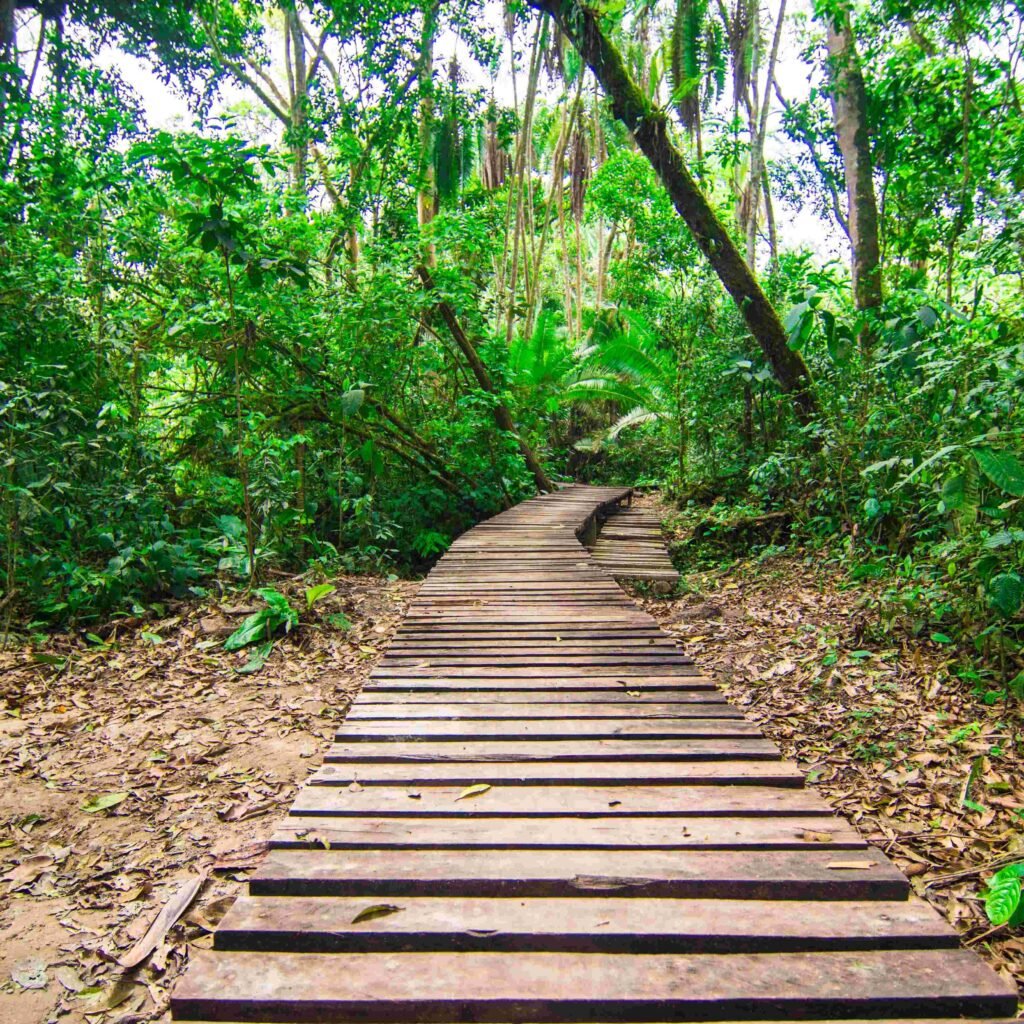
Chimpanzee tracking in Uganda is a thrilling and rewarding experience that will give you a deeper appreciation of these amazing creatures and their forest home. However, it is not an easy walk in the park. It requires physical fitness, patience, and respect for the wildlife and the environment. Here are some tips and information to help you plan your chimpanzee tracking adventure in Uganda.
Introduction to Uganda: The Pearl of Africa
Uganda is a landlocked country in East Africa that borders Kenya, Tanzania, Rwanda, South Sudan, and the Democratic Republic of Congo. It covers an area of 241,038 square kilometers (93,065 square miles) and has a population of about 45 million people. Uganda is known for its diverse and scenic landscapes, ranging from snow-capped mountains to lush rainforests to savannah plains to freshwater lakes. It has a tropical climate with two rainy seasons (March-May and September-November) and two dry seasons (December-February and June-August).
Uganda is also blessed with a rich and unique wildlife heritage. It hosts more than half of the world’s remaining mountain gorillas, as well as other endangered species such as rhinos, elephants, lions, leopards, cheetahs, giraffes, zebras, hippos, crocodiles, and antelopes. It has over 1,000 bird species, making it one of the best birding destinations in Africa. It also has 13 primate species, including chimpanzees, golden monkeys, red colobus monkeys, black-and-white colobus monkeys, blue monkeys, red-tailed monkeys, grey-cheeked mangabeys, vervet monkeys, baboons, bushbabies, and pottos.
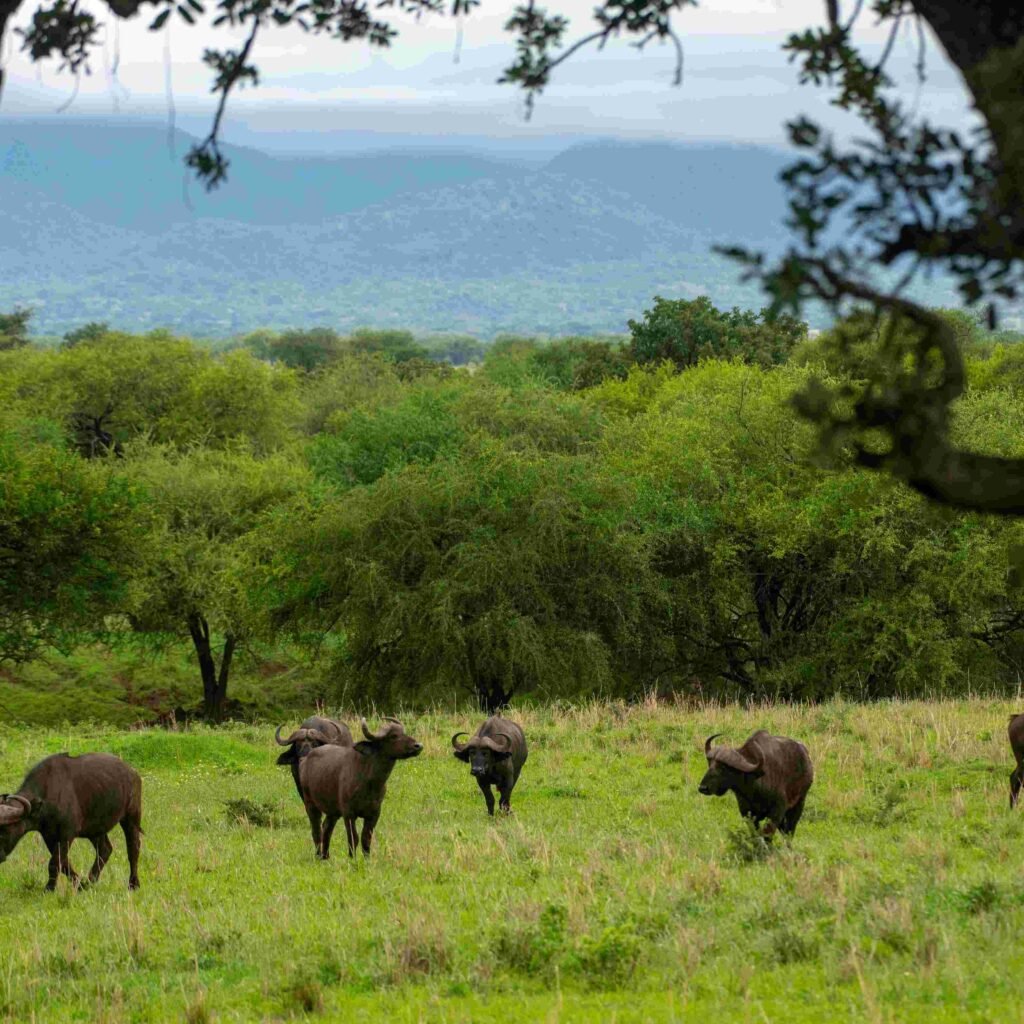
Uganda has been dubbed as the “Pearl of Africa” by Winston Churchill for its natural beauty and diversity. It is a country that offers something for every traveler, whether you are interested in culture, history, adventure, or relaxation. You can explore its vibrant cities such as Kampala and Entebbe; visit its historical and cultural sites such as the Kasubi Tombs and the Uganda Museum; enjoy its outdoor activities such as rafting on the Nile River and hiking on Mount Elgon; or relax on its islands such as Ssese Islands and Ngamba Island.
Where to Track Chimps in Uganda
Uganda has several national parks and forests where you can track chimpanzees. Each location has its own characteristics and attractions that make it worth visiting. Here are some of the most popular places for chimpanzee tracking in Uganda:
Kibale National Park
Kibale National Park is the most popular destination for chimpanzee tracking in Uganda. It is located in western Uganda, about 320 km from Kampala. It covers an area of 795 sq km and has an elevation range of 1100 to 1600 meters above sea level. It is one of the most biodiverse forests in Africa, with over 350 species of trees and over 70 species of mammals. It is home to the largest population of chimpanzees in Uganda, with about 1500 individuals living in 13 habituated groups. It also hosts 12 other species of primates, such as red colobus monkeys, black-and-white colobus monkeys, grey-cheeked mangabeys, red-tailed monkeys, blue monkeys, L’Hoest’s monkeys, olive baboons, and bushbabies. In addition to primates, Kibale National Park has over 375 species of birds, such as the African grey parrot, the green-breasted pitta, the crowned eagle, and the great blue turaco.
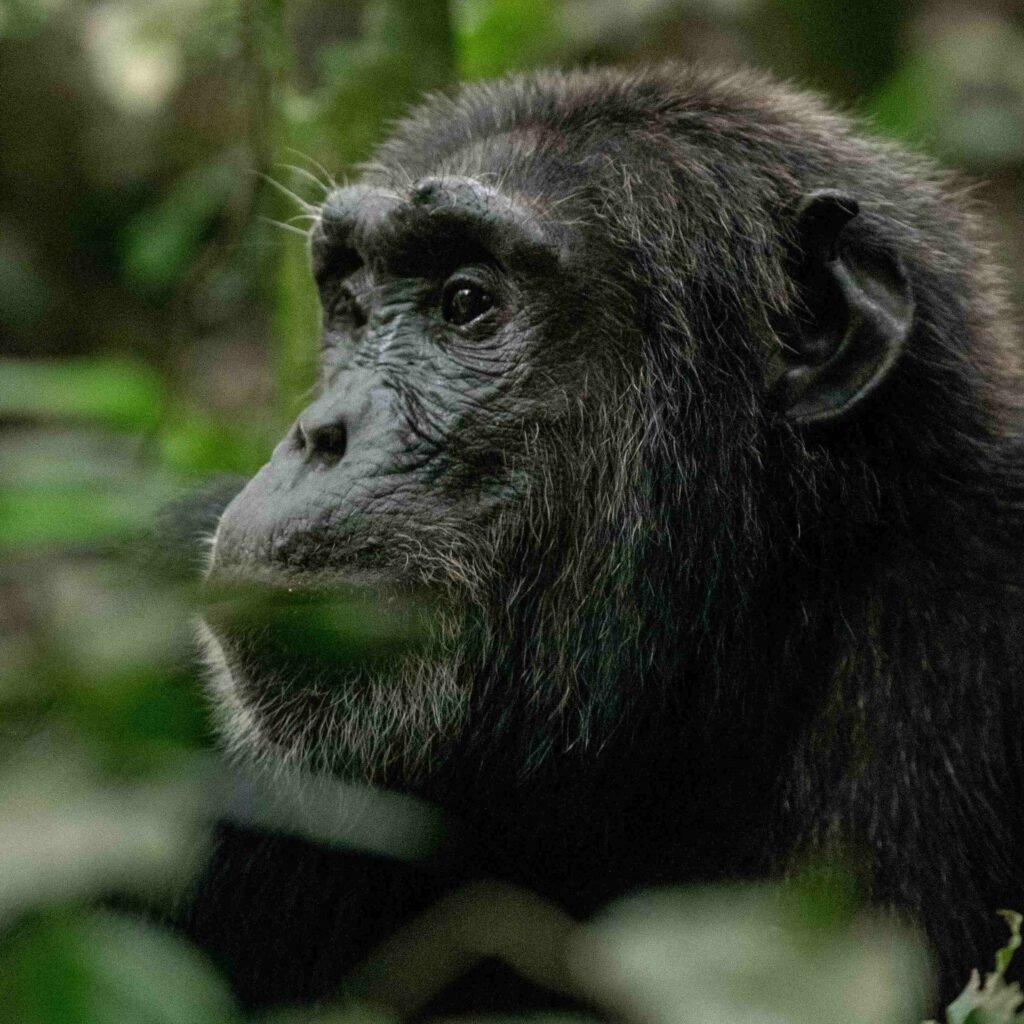
Kibale National Park offers two types of chimpanzee tracking experiences: chimpanzee trekking and chimpanzee habituation. Chimpanzee trekking is the standard activity that allows you to spend one hour with a habituated group of chimpanzees after finding them in the forest. Chimpanzee habituation is a more immersive activity that allows you to spend up to four hours with a semi-habituated group of chimpanzees that are still undergoing the process of getting used to human presence. Both activities start from Kanyanchu Visitor Centre at 8 am or 2 pm and last for 2 to 4 hours depending on the location of the chimpanzees..
Budongo Forest
This is another great place for chimpanzee tracking in Uganda. It is located in northwestern Uganda within the Murchison Falls National Park. It covers an area of 825 square kilometers (318 square miles) and has an average population of chimpanzees in Uganda. Budongo Forest has about 800 chimpanzees living in 6 habituated groups that are open for tourism. It also has other primates such as black-and-white colobus monkeys, blue monkeys, red-tailed monkeys, vervet monkeys, and baboons.
Budongo Forest has a dense tropical rainforest with tall mahogany trees and ironwood trees. It has over 360 bird species, including rare ones such as the puvel’s illadopsis and the yellow-footed flycatcher.
It also has other wildlife such as lions, leopards, hyenas, elephants, giraffes, and antelopes.
Kyambura Gorge
This is a hidden gem for chimpanzee tracking in Uganda. It is located in southwestern Uganda within the Queen Elizabeth National Park. It is a deep gorge that cuts through the savannah and is filled with lush vegetation and a river. It covers an area of 156 square kilometers (60 square miles) and has a small population of chimpanzees that are isolated from the rest of the park. Kyambura Gorge has about 20 chimpanzees living in one habituated group that is open for tourism. It also has other primates such as black-and-white colobus monkeys, red-tailed monkeys, vervet monkeys, and baboons. It has a unique habitat that contrasts with the surrounding landscape. It has over 200 bird species, including migratory ones such as the lesser flamingo and the greater flamingo. It also has other wildlife such as hippos, crocodiles, buffaloes, and elephants.
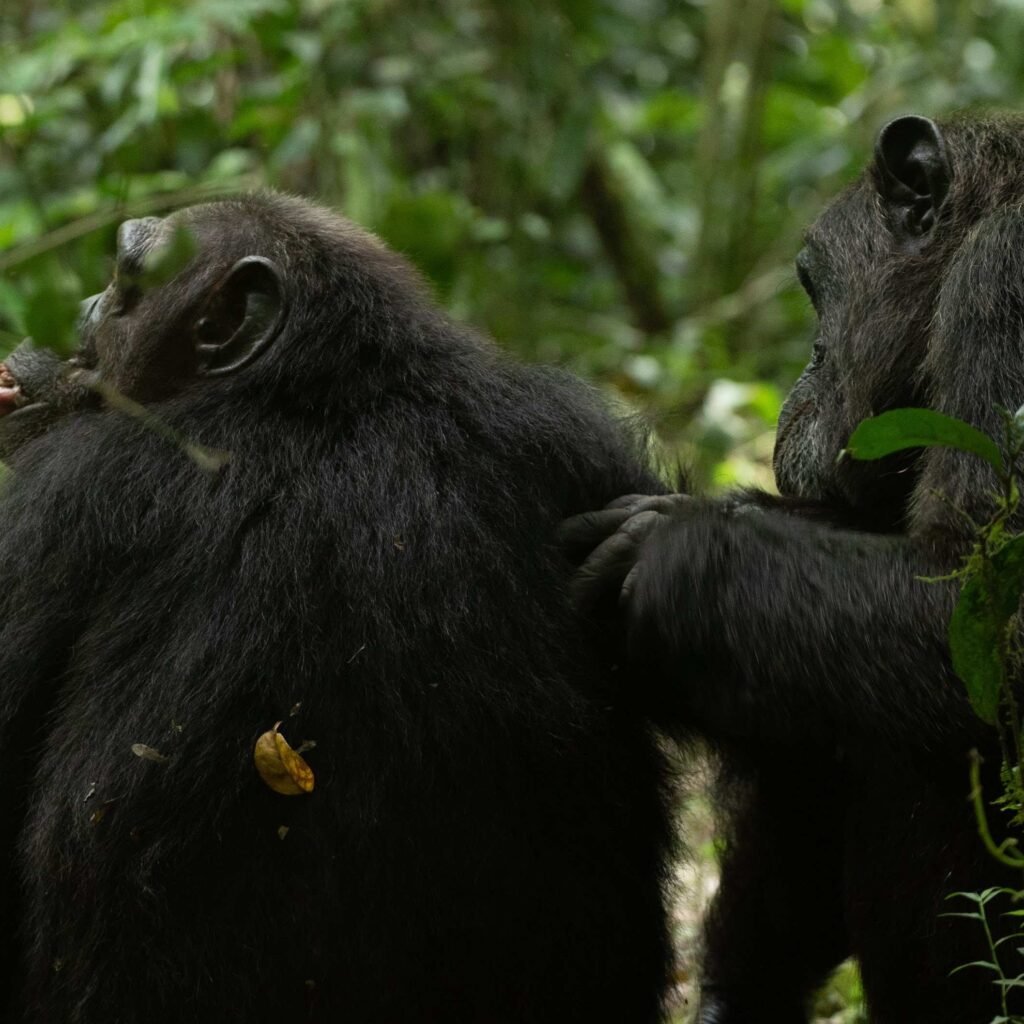
Chimpanzee Behavior and Biology
Chimpanzees are one of the most fascinating animals in the world. They are closely related to humans and share many similarities with us. They have complex social structures, high intelligence, and remarkable behaviors such as using tools, communicating with vocalizations, and expressing emotions. Here are some interesting facts about chimpanzees that you should know before tracking them:
- Chimpanzees belong to the genus Pan, which includes two species: the common chimpanzee (Pan troglodytes) and the bonobo (Pan paniscus). The common chimpanzee is found in 21 countries in West and Central Africa, while the bonobo is found only in the Democratic Republic of Congo. The two species are separated by the Congo River and differ in their appearance, behavior, and culture.
- Chimpanzees live in large communities that consist of several subgroups called parties. The parties can range from a few individuals to over 100 individuals, depending on the availability of food and mates. The parties are fluid and dynamic, meaning that they can change their size and composition frequently. The communities are based on male bonds, meaning that males stay in their natal group while females disperse to other groups when they reach maturity. The males form a dominance hierarchy that determines their access to resources and females. The females form temporary alliances with other females or males for protection and support.
- Chimpanzees are omnivorous, meaning that they eat both plants and animals. They mainly feed on fruits, leaves, seeds, nuts, flowers, and insects. They also hunt and eat meat, such as monkeys, antelopes, pigs, and rodents. They use various tools to obtain food, such as sticks to dig out termites, stones to crack nuts, leaves to sponge water, and spears to stab bushbabies.
- Chimpanzees communicate with each other using a range of vocalizations, gestures, facial expressions, and body postures. They have different calls for different purposes, such as alarm calls, food calls, greeting calls, and mating calls. They also use gestures such as pointing, waving, clapping, hugging, and kissing to convey their intentions and emotions. They can recognize themselves in mirrors and have a sense of self-awareness.
- Chimpanzees have a long lifespan that can reach up to 50 years in the wild and 60 years in captivity. They reach sexual maturity at around 8-10 years for females and 12-15 years for males. They have a gestation period of about 8 months and give birth to one offspring at a time. They have a strong mother-infant bond that lasts for several years. The infants depend on their mothers for food, protection, and learning until they are weaned at around 4-5 years.
Chimpanzee Tracking Experience in Uganda
Chimpanzees are one of the closest relatives of humans, sharing about 98% of our DNA. They are also highly intelligent, social, and expressive animals that have their own culture, language, and personality. Tracking chimpanzees in Uganda gives you the opportunity to witness their fascinating behavior and learn more about their complex lives.
Chimpanzee tracking involves following a group of habituated chimpanzees, which means they are used to human presence and will not run away or attack. You will be accompanied by a trained guide who will help you locate the chimps and explain their habits and characteristics. You will also have a ranger who will ensure your safety and respect for the wildlife.

The best part of chimpanzee tracking in Uganda is that you never know what you will see or hear. You might encounter the chimps feeding on fruits, leaves, or insects, grooming each other, playing, resting, or even hunting. You might also hear their loud and distinctive calls, such as pant-hoots, screams, or drumming on tree trunks. The experience is thrilling, educational, and emotional at the same time.
Other Wildlife Encounters
Chimpanzee tracking in Uganda is not only about the chimps. It is also a great way to explore the rich biodiversity of Uganda’s forests, where you can find many other wildlife species. Depending on where you go for chimpanzee tracking, you might spot some of the following animals:
- Monkeys: Uganda is home to 13 species of primates, including monkeys such as colobus, vervet, blue, red-tailed, L’Hoest’s, and golden monkeys. They are often seen jumping from tree to tree or feeding on fruits and flowers.
- Birds: Uganda is a birdwatcher’s paradise, with over 1000 species of birds recorded in the country. Some of the colorful and exotic birds you can see in the forests include turacos, hornbills, kingfishers, bee-eaters, sunbirds, weavers, and flycatchers.
- Forest-dwelling animals: Besides primates and birds, you can also encounter some of the mammals that live in the forests, such as elephants, buffaloes, antelopes, bush pigs, duikers, civets, mongooses, and porcupines.
Trekking and Hiking
Chimpanzee tracking in Uganda is not only a wildlife experience but also a physical challenge. It involves trekking and hiking through dense and hilly forests, sometimes on steep and slippery trails. The duration and difficulty of the activity depend on several factors, such as the location of the chimps, the weather conditions, and your fitness level.
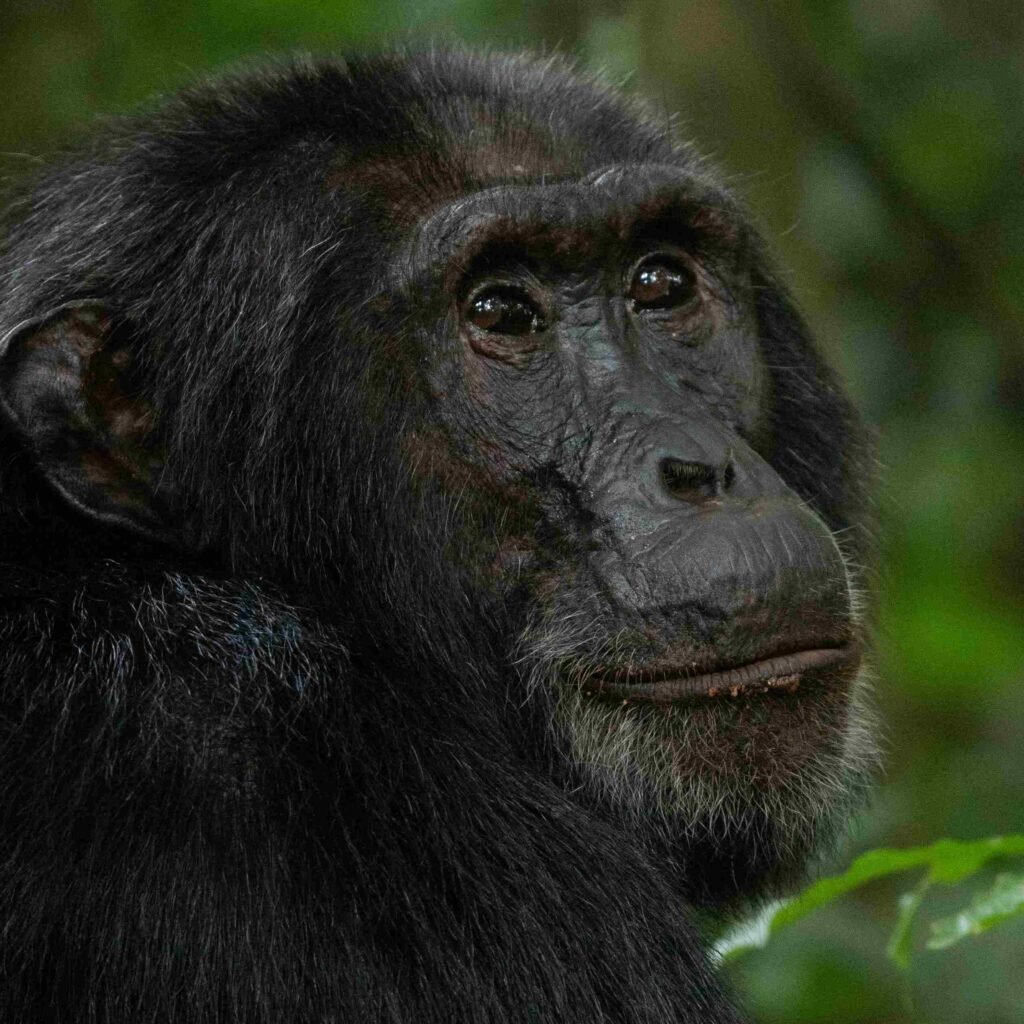
The average time for chimpanzee tracking is between 2 to 4 hours, but it can be shorter or longer depending on how lucky you are. You will usually spend one hour with the chimps once you find them. However, this is not guaranteed as the chimps are wild and free to move as they please.
Preparing for Chimpanzee Tracking in Uganda
To enjoy chimpanzee tracking in Uganda, you need to be in good physical shape and have some stamina and endurance. You also need to wear appropriate clothing and footwear for the forest environment. Some of the items you should bring include:
- Long-sleeved shirt and trousers to protect yourself from scratches and insect bites
- Hiking boots or shoes with good grip and ankle support
- Rain jacket or poncho in case of rain
- Hat or cap to shield yourself from the sun
- Gloves to protect your hands from thorns and nettles
- Binoculars and camera to capture the wildlife
- Water and snacks to keep yourself hydrated and energized
You also need to follow some rules and guidelines when doing chimpanzee tracking in Uganda. These include:
- Booking your chimpanzee tracking permit in advance as they are limited and sell out quickly
- Arriving at the park headquarters early in the morning for a briefing by your guide
- Keeping a distance of at least 7 meters from the chimps to avoid disturbing them or transmitting diseases
- Not using flash photography or making loud noises when near the chimps
- Not eating or drinking when near the chimps
- Not touching or feeding the chimps
- Not littering or damaging the forest
Responsible Tourism
Chimpanzee tracking is one of the most popular and rewarding activities for visitors to Uganda, offering a unique opportunity to observe these endangered primates in their natural environment. However, chimpanzee tracking also comes with some responsibilities and challenges, as these animals are highly vulnerable to human disturbance, disease, and habitat loss. Below, we discuss some useful information and tips on how to enjoy chimpanzee tracking in Uganda while minimizing your impact on the environment and the local communities.
Conservation Efforts:
Uganda is one of the few countries in Africa that has a national policy and strategy for the conservation of great apes, including chimpanzees. The country has designated several protected areas where chimpanzee populations are monitored and managed by the Uganda Wildlife Authority (UWA), in collaboration with various local and international partners. Some of these protected areas are:
- Kibale National Park: Kibale National Park is a hotspot for research and conservation of chimpanzees, with several ongoing projects led by institutions such as Makerere University, Max Planck Institute, and Kibale Chimpanzee Project. These projects aim to study the behavior, ecology, health, and genetics of chimpanzees, as well as to promote their conservation through education, community engagement, and alternative livelihoods.
- Budongo Forest: Budongo Forest Reserve is also a center for research and conservation of chimpanzees, with a long history of studies dating back to the 1960s. The Budongo Conservation Field Station (BCFS) is a leading institution that conducts research on chimpanzee behavior, ecology, health, and cognition, as well as providing training and education for students, researchers, and local communities.
- Kyambura Gorge: Kyambura Gorge is also a site for research and conservation of chimpanzees, with projects led by institutions such as Kyoto University and Kyambura Gorge Eco-Tourism Project (KGETP). These projects aim to monitor and protect the chimpanzees and their habitat, as well as to empower local communities through sustainable tourism development.
Local Communities and Culture
One of the benefits of chimpanzee tracking in Uganda is that it provides visitors with a chance to interact with local communities living near the chimpanzee habitats. These communities have coexisted with chimpanzees for generations, and have developed various traditions, customs, and livelihoods that reflect their relationship with nature. By visiting these communities, visitors can learn about their culture and history, as well as support their development and well-being.
Some examples of community-based activities that visitors can enjoy while chimpanzee tracking in Uganda are:
- Community walks: These are guided walks that take visitors through villages, farms, schools, and markets, where they can meet and interact with local people and learn about their daily lives and activities. Community walks also offer visitors an opportunity to experience the local cuisine, music, dance, and crafts, as well as to participate in some of the activities such as cooking, farming, or weaving.
- Cultural performances: These are shows that showcase the local talent and creativity of the communities, featuring traditional songs, dances, stories, and instruments. Cultural performances are usually organized by community groups or associations, such as women’s groups, youth groups, or cultural troupes. Cultural performances are a great way to appreciate the diversity and richness of the local culture, as well as to support the income and empowerment of the performers.
- Home stays: These are overnight stays that allow visitors to experience the hospitality and lifestyle of the local families. Home stays are usually arranged by community members who have spare rooms or houses that they can offer to visitors. Home stays are a great way to immerse oneself in the local culture and environment, as well as to build friendships and trust with the hosts.
Best Time to Track Chimps in Uganda
The best time to visit Uganda for chimpanzee tracking is during the dry seasons, which are from December to February and from June to September. During these periods, the weather is generally sunny and warm, and the trails are less muddy and slippery. The dry seasons also coincide with the peak seasons for tourism in Uganda, which means that you will have more chances of finding availability for accommodation, permits, and transportation.
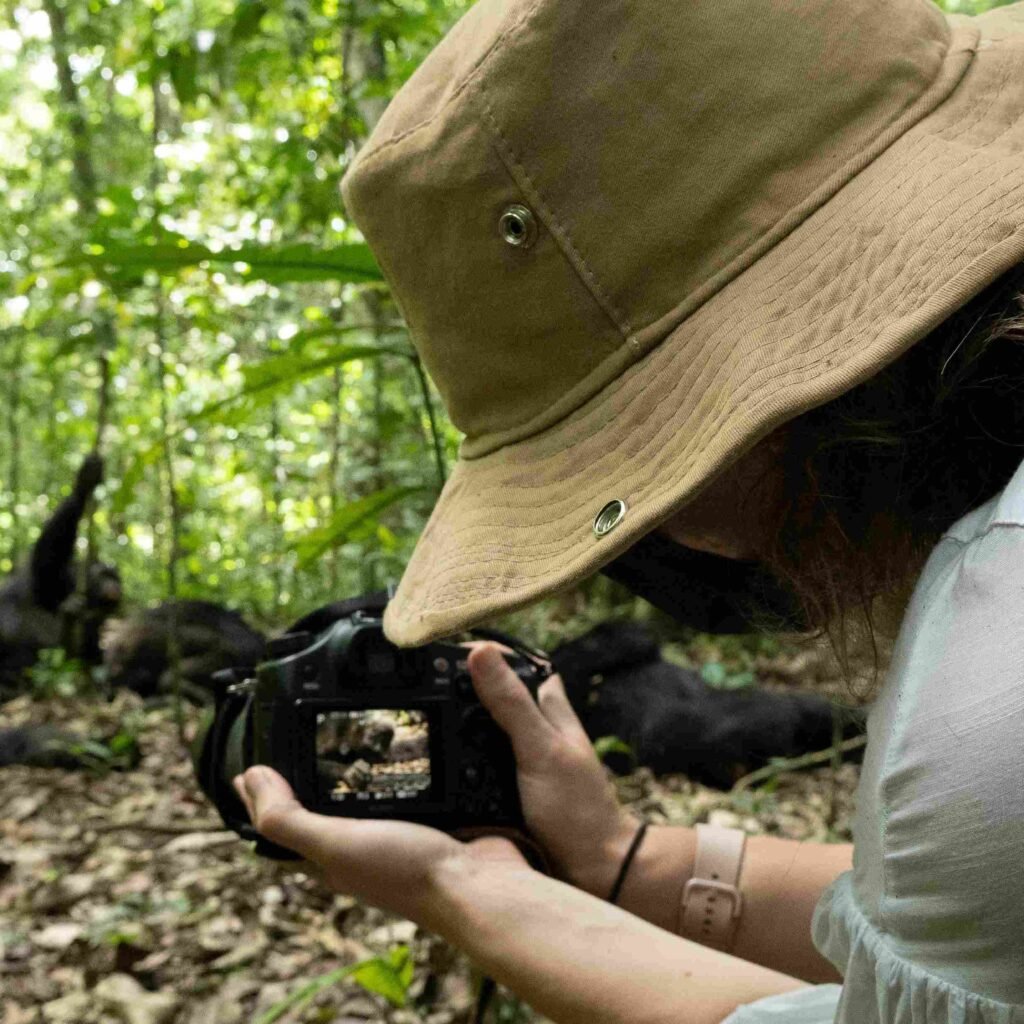
However, chimpanzee tracking can be done all year round, as the chimpanzees do not migrate and can be found in the forests throughout the year. The wet seasons, which are from March to May and from October to November, have some advantages as well. The rain makes the forests more lush and green, and the chimpanzees tend to stay closer to the ground, making them easier to spot. The wet seasons are also less crowded and cheaper, as there are fewer tourists and lower prices for accommodation and permits.
Safari Planning Tips
Planning a chimpanzee tracking safari in Uganda requires some preparation and research. Here are some practical advice to help you plan your trip:
Book your permits in advance
A chimpanzee tracking permit is a legal document that grants you access to a specific chimpanzee group in a specific forest for a specific date and time. The permits are issued by the Uganda Wildlife Authority (UWA) and are limited to a certain number per day per forest. The permits cost $200 per person per trek in Kibale National Park, $90 per person per trek in Budongo Forest Reserve, $50 per person per trek in Kalinzu Forest Reserve, and $50 per person per trek in Kyambura Gorge. The permits are valid for one hour of viewing the chimpanzees once you find them. You can book your permits directly through UWA or through a reputable tour operator. It is advisable to book your permits at least 3 months in advance, especially during the peak seasons, as they tend to sell out quickly.
Choose your destination
Uganda has several destinations where you can track chimpanzees, each with its own characteristics and attractions. The most popular destination is Kibale National Park, which has the highest concentration of chimpanzees in Africa and boasts a diversity of other primates and birds. Other destinations include Budongo Forest Reserve, which is part of Murchison Falls National Park and offers scenic views of the Nile River; Kalinzu Forest Reserve, which is near Queen Elizabeth National Park and has a rich cultural heritage; and Kyambura Gorge, which is a deep valley within Queen Elizabeth National Park and has a unique ecosystem. You can choose one or more destinations depending on your budget, time, and interests.
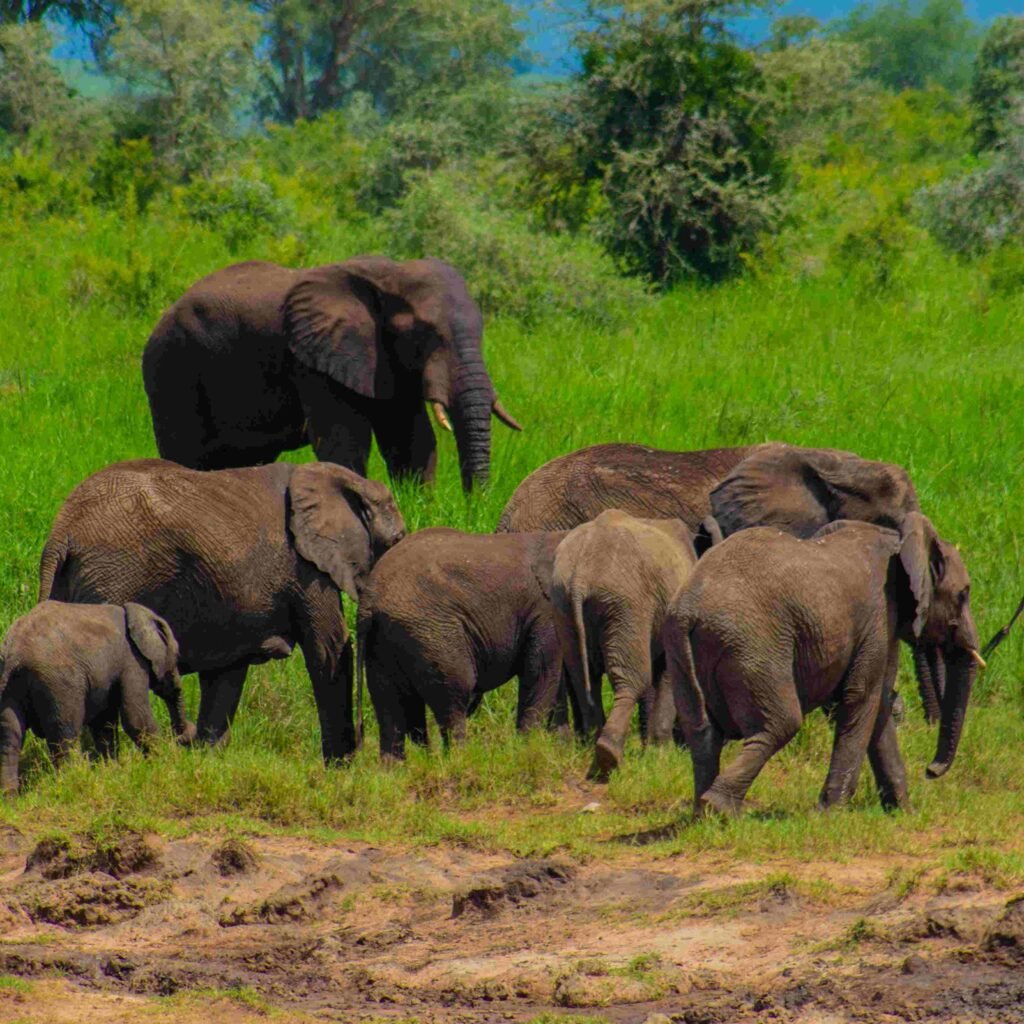
Arrange your transportation
Depending on your destination, you will need to arrange your transportation from Kampala or Entebbe (the main entry points to Uganda) to the forest where you will track the chimpanzees. You can either hire a private car with a driver or join a group tour with a safari company. The driving time varies from 4 hours to 8 hours depending on the destination and the road conditions. You can also opt for domestic flights from Entebbe to Kasese or Pakuba airstrips, which are near Kibale National Park and Murchison Falls National Park respectively. The flights take about 1 hour and cost around $300 per person one way.
Take health and safety precautions
Before traveling to Uganda, you should consult your doctor and get the necessary vaccinations and medications for malaria prophylaxis and yellow fever prevention. You should also carry insect repellent, sunscreen, first aid kit, and bottled water with you. While in Uganda, you should avoid drinking tap water, eating raw or uncooked food, and walking alone at night. You should also follow the instructions of your guides and rangers while tracking the chimpanzees, as they are wild animals and can be unpredictable and aggressive. You should also respect the local culture and customs of the people you encounter, and ask for permission before taking photos or videos of them.
Choose your accommodation
Uganda has a range of accommodation options to suit different budgets and preferences. You can choose from luxury lodges, mid-range hotels, budget guesthouses, or camping sites. Some of the accommodation options are located within or near the forests where you will track the chimpanzees, while others are in nearby towns or villages. You can book your accommodation online or through a tour operator. Some of the recommended accommodation options are:
- Kibale Forest Camp: A mid-range tented camp located in a private forest near Kibale National Park. It has 10 safari tents with en-suite bathrooms and private verandas. It also has a restaurant, a bar, and a lounge area. The camp offers chimpanzee tracking, chimpanzee habituation, and birdwatching activities. The rates are $140 per person per night for full board.
- Budongo Eco Lodge: A budget eco-lodge located in Budongo Forest Reserve. It has 5 cabins with shared bathrooms and 4 dormitory rooms with bunk beds. It also has a restaurant, a bar, and a library. The lodge offers chimpanzee tracking, chimpanzee habituation, forest walks, and birdwatching activities. The rates are $50 per person per night for full board.
- Kalinzu Forest Cottages: A budget guesthouse located near Kalinzu Forest Reserve. It has 6 cottages with private bathrooms and balconies. It also has a restaurant, a bar, and a garden. The guesthouse offers chimpanzee tracking, forest walks, and cultural tours. The rates are $30 per person per night for bed and breakfast.
- Kyambura Gorge Lodge: A luxury lodge located on the edge of Kyambura Gorge. It has 8 cottages with en-suite bathrooms and panoramic views. It also has a swimming pool, a spa, a restaurant, and a lounge area. The lodge offers chimpanzee tracking, game drives, boat cruises, and community projects. The rates are $490 per person per night for full board.
The post Chimpanzee Tracking in Uganda appeared first on Uganda Safari Tours.
Mabamba Shoebill Watching in Uganda 12 Jul 2023, 2:24 am
Shoebill watching in Uganda is an adventure every bird enthusiast seeking a unique and thrilling experience shouldn’t miss. One of the best places to spot this magnificent bird is in Mabamba Swamp, a wetland located about 50 kilometers west of Uganda’s capital city, Kampala.
Mabamba Swamp is renowned for being one of the most reliable places in the world to observe shoebills. This vast wetland ecosystem is abundant in papyrus reeds and open water, creating a perfect habitat for these incredible birds. One of the most popular activities here is a boat ride through the swamp, where visitors can get up close and personal with the shoebills.
Shoebill Tour Mabamba Swamp
To enhance your shoebill watching experience, consider booking a shoebill tour in Mabamba Swamp. Expert guides accompany you and provide valuable insights about the bird’s behavior and habitat. These tour guides are well-versed in the region’s ecology and ensure that you have the best opportunity to see these rare and extraordinary birds.
To make the most of your visit to Mabamba Swamp, it is advisable to opt for a tour led by experienced guides who are familiar with the landscape and its wildlife. These tour operators ensure your safety and grant you the opportunity to maximize your chances of spotting the elusive shoebill.
Shoebill Stork Facts
The shoebill (Balaeniceps rex) is a large bird species known for its distinctive shoe-shaped bill, which can reach up to 24 centimeters in length. These solitary birds can stand up to five feet tall and have a wingspan of over eight feet. They primarily feed on lungfish, although they occasionally consume snakes and small mammals. With their prehistoric appearance, it’s no wonder why these birds captivate birdwatchers from around the world.
Birdlife in Mabamba Swamp
While the shoebill is the star attraction, Mabamba Swamp is also home to a diverse range of bird species. Over 260 species have been recorded here, including African jacanas, African fish eagles, and several species of kingfishers. The wetland ecosystem provides a valuable habitat for both resident and migratory birds. So, along with witnessing the mighty shoebill, you can also tick off several other bird species from your list.
Activities in Mabamba Swamp
Besides shoebill watching, Mabamba Swamp offers visitors a plethora of activities to indulge in. Nature walks along the swamp’s boardwalks present opportunities to spot other wildlife such as otters, reptiles, and butterflies. Canoeing and fishing are also popular activities in the swamp that allow you to experience the tranquility and beauty of the wetland up close.
Best time to see the Shoebill in Uganda
The best time to see shoebills in Uganda is during the dry season, which typically runs from December to February and June to August. During these months, the water levels are lower, making it easier to navigate through the swamp and locate the birds.
How to get to Mabamba Swamp to see the Shoebill?
Mabamba Swamp is located approximately one hour’s drive from Kampala. Visitors can hire a car or take a taxi to reach the swamp. Once there, you can hire a local boat and guide to take you through the papyrus channels and increase your chances of spotting a shoebill.
Where to stay near Mabamba Swamp to see the Shoebill?
There are various accommodation options available near Mabamba Swamp, ranging from budget to luxury lodges. These lodges provide a comfortable and convenient base for exploring the swamp and organizing your shoebill watching activities. Some popular choices include the Karibu Guest House and the Lake Victoria View Resort.
Where to find the Shoebill Stork in Uganda?
Mabamba Swamp is the most well-known location for spotting shoebills in Uganda. However, these birds can also be found in other wetland areas, including Ziwa Rhino Sanctuary, Murchison Falls National Park, and Queen Elizabeth National Park. Each location offers a unique experience, and it is worth exploring beyond Mabamba Swamp for a comprehensive shoebill watching adventure.
Tips for photographing the Shoebill
Photographing shoebills requires patience, precision, and the right equipment. A telephoto lens will allow you to capture the intricate details of the bird from a distance without disturbing its natural behavior. It is advisable to hire a tour guide who is experienced in photographing shoebills as they can provide guidance on optimal camera settings and composition. Additionally, be respectful of the bird’s space and avoid actions that may cause stress or disturbance.
Book a Shoebill Bird-Watching Tour
To ensure a seamless and unforgettable shoebill-watching experience in Uganda, it is recommended to book a shoebill bird-watching tour. At Tusker Trails Holidays, we specialize in creating unforgettable Uganda tours that encompass adventures to include shoebill-watching tours, get in touch today to request a free quote today to start planning your adventure.
The post Mabamba Shoebill Watching in Uganda appeared first on Uganda Safari Tours.
Bwindi Impenetrable Forest National Park 9 Jul 2023, 11:57 am
Bwindi Impenetrable Forest stands as one of Uganda’s most captivating and revered natural wonders. Nestled in the southwestern part of the country, this enchanting forest serves as a haven for an astonishing array of flora and fauna. As a UNESCO World Heritage Site, Bwindi Impenetrable Forest offers an unparalleled experience for nature enthusiasts, wildlife lovers, and adventure seekers alike.
The diversity found within Bwindi Impenetrable Forest is simply awe-inspiring. Its remarkable landscapes, characterized by misty hills and lush vegetation, hold a mysterious allure unlike any other. The forest encompasses an extensive area of over 321 square kilometers, providing a vast sanctuary for a wide range of wildlife species but famously known for the majestic mountain gorillas.
This national park is a haven for wildlife enthusiasts and nature lovers alike. Its rich biodiversity encompasses over 120 mammal species, including 11 primates such as the rare mountain gorillas and chimpanzees. Additionally, the park is home to more than 350 bird species, making it a paradise for avid birdwatchers.
Planning a visit to Bwindi Impenetrable Forest National Park?
The best time to explore the park is during the dry seasons, which typically occur from December to February and June to August. During these months, the weather is pleasant, and trekking conditions are optimal.
When it comes to accommodation, Bwindi Impenetrable Forest National Park offers a range of options to suit every traveler’s preferences. From luxurious lodges to budget-friendly campsites, there is something for everyone. Rest assured that whatever option you choose, you will be surrounded by the beauty and tranquility of the forest.
Transportation to the park is convenient, with several options available. You can choose to fly into the nearest airstrip and then drive to the park, or opt for a scenic road trip from major cities like Kampala or Entebbe. Whichever mode of transportation you choose, the journey will be filled with stunning views and a sense of adventure.
Once inside the park, you’ll find a wide array of activities to engage in. Gorilla trekking is undoubtedly the highlight of any visit to Bwindi. Tracking these magnificent creatures in their natural habitat is a once-in-a-lifetime experience that will leave you in awe. Birdwatching enthusiasts will be delighted by the opportunity to spot rare and endemic bird species, while nature walks offer a chance to immerse yourself in the park’s serene surroundings.
Another unique experience offered in Bwindi is Batwa Cultural visits. This cultural encounter allows you to learn about the ancient traditions and way of life of the Batwa people, the indigenous inhabitants of the forest. Engaging in their customs and storytelling will provide a deeper understanding of the forest and its significance to local communities.
The gorilla families available for trekking in Bwindi are each unique and fascinating. From the Bweza family, known for their playful behavior, to the Nkuringo family with their strong patriarch, each encounter offers a different glimpse into the lives of these incredible creatures. With a total of 19 gorilla families, Bwindi Impenetrable Forest National Park provides ample opportunities for visitors to witness and connect with these majestic animals.
Additionally, choosing our safari company for your gorilla trekking adventure in Bwindi ensures a seamless and unforgettable experience. Our team of experienced guides possesses an in-depth knowledge of the gorillas’ behavior and habitat, enabling them to provide you with a safe and enriching trekking experience. Furthermore, our comfortable accommodations and personalized service guarantee a memorable stay, leaving you with cherished memories to last a lifetime.
Why Choose to Visit Bwindi Impenetrable Forest National Park for Gorilla Trekking?
When it comes to gorilla trekking, Bwindi Impenetrable Forest National Park stands out as a premier destination. Its advantages are numerous and undeniable. Firstly, the park is renowned for its population of endangered mountain gorillas. With half of the world’s remaining population residing here, the chances of encountering these magnificent creatures are higher compared to other locations.
So, whether you’re captivated by the park’s incredible landscapes, intrigued by its diverse flora and fauna, or simply eager to embark on an unforgettable adventure, Bwindi Impenetrable Forest National Park is the perfect destination for your next wildlife getaway. Prepare to be amazed and inspired as you uncover the wonders of this truly extraordinary place.
The post Bwindi Impenetrable Forest National Park appeared first on Uganda Safari Tours.
What is the Best Time to Visit Uganda for Safari? 6 Jul 2023, 3:24 am
The best time to go on a safari in Uganda depends on various factors, such as personal preferences, weather, wildlife viewing opportunities, and tourist seasons. The dry season from June to September and December to February offers optimal weather and an excellent chance to spot wildlife, while the wet season from March to May and October to November provides lush landscapes, incredible birding opportunities, and reduced tourist activity. Ultimately, both seasons carry their own unique charm, giving you the chance to have a remarkable safari experience in the beautiful country of Uganda.
Weather
The timing of your safari in Uganda greatly depends on the weather patterns prevalent throughout the year. Uganda experiences two primary seasons, namely the dry and wet seasons. It is crucial to choose a time when the weather is favorable to enhance your safari experience.
Dry Season (December to February and June to September) -This period is considered the best time to visit Uganda for a safari adventure. The weather is typically sunny, with minimal rainfall and lower humidity levels. The drier conditions allow for better road accessibility, making it easier to explore Uganda’s national parks and reserves.
Wet Season (March to May and October to November) – Although the wet season presents some challenges, it has its own unique advantages. The lush green vegetation and vibrant landscapes make for stunning photographic opportunities. Additionally, the wet season provides favorable conditions for bird watching, with migratory birds visiting during these months.
Wildlife Viewing Opportunities
To witness Uganda’s abundant wildlife in their most active state, it is essential to consider the wildlife viewing opportunities in different seasons.
Dry Season – The dry season provides excellent wildlife sightings as animals tend to congregate around water sources, making them easier to spot. Additionally, with less vegetation, sightings are less obstructed, allowing for better photography opportunities.
Wet Season – While wildlife might be slightly harder to spot during the wet season due to denser vegetation, certain animals become more active, such as primates, elephants, and various bird species. The lush surroundings and newborn animal sightings add an enchanting element to your safari experience.
Tourist Seasons
Understanding tourist seasons in Uganda is crucial for avoiding overcrowding and ensuring a more personalized and immersive safari adventure.
High Season – The high tourist season in Uganda coincides with the dry season. Expect larger crowds, higher prices, and limited availability of accommodations and permits. Booking in advance is highly recommended.
Low Season – The wet season, particularly the months of April and May, signifies the low tourist season. The advantage is that you’ll experience fewer tourists, better accommodation rates, and the opportunity to have Uganda’s wildlife almost exclusively to yourself.
The post What is the Best Time to Visit Uganda for Safari? appeared first on Uganda Safari Tours.
Safari Tips to The Best Gorilla Trekking Tours 8 Jun 2023, 11:44 am
Gorilla trekking is one of the most exhilarating experiences for any traveler who is interested in wildlife and nature. And if you are planning for a gorilla trekking tour, then Africa is the place to be! There are several countries in Africa that offer gorilla trekking tours, and each of them has its unique beauty, habitat, and gorilla species. In this article, we will provide you with a detailed guide on how to choose the best gorilla trekking tours and the best places to experience this unique adventure.
The first thing you should consider when choosing a gorilla trekking tour is the location. Currently, there are only four countries in Africa that offer gorilla trekking tours: Uganda, Rwanda, Democratic Republic of Congo (DRC), and Gabon. Each of these countries has distinct gorilla habitats and trekking experiences.
Uganda, for example, is known for having the highest population of gorillas and the most accessible sites for trekking. The most popular national parks for gorilla trekking in Uganda are Bwindi Impenetrable National Park and Mgahinga Gorilla National Park. In contrast, Rwanda’s Volcanoes National Park is the most visited gorilla trekking destination in Africa, and it’s home to ten habituated gorilla families. In DRC, Virunga National Park is the best place for gorilla trekking, but it’s currently closed due to political instability. Lastly, Gabon’s Lopé National Park offers a unique gorilla trekking experience with the chance to see western lowland gorillas in their natural habitat.
Best Gorilla Trekking Tours in Uganda
-
10 Day Uganda Safari Wildlife, Gorillas and Chimpanzees
-
11 Day Kenya Wildlife & Uganda Gorilla Safari
-
12 Ultimate Uganda Safari Holiday
-
13 Day Best of Uganda & Kenya Safari
The second factor to consider is the cost of the tour. Gorilla trekking tours are generally expensive, and the price depends on factors such as location, duration, accommodation, and transportation. Rwanda’s gorilla trekking permits are the most expensive, costing $1500 per visit. Uganda’s permits cost $700, while DRC permits are the cheapest, costing $400. It’s important to note that the permit fee for gorilla trekking tours is used for conservation and management of gorilla habitats.
The third factor to consider is the tour operator. Choosing a reputable tour operator is essential to ensure the safety and success of your gorilla trekking experience. A good tour operator should have experienced guides, comfortable transportation, and appropriate accommodation. It’s important to read reviews and choose a tour operator that has a proven track record of delivering a memorable gorilla trekking experience.
In conclusion, gorilla trekking tours are a once-in-a-lifetime experience that require careful planning and consideration. With the right location, cost, and tour operator, you can have an unforgettable encounter with these majestic creatures. Whether you choose to trek in Uganda, Rwanda, DRC, or Gabon, there is no doubt that you will come away with a new appreciation for these endangered species and their habitats.
The post Safari Tips to The Best Gorilla Trekking Tours appeared first on Uganda Safari Tours.
Page processed in 2.237 seconds.
Powered by SimplePie 1.3.1, Build 20121030175403. Run the SimplePie Compatibility Test. SimplePie is © 2004–2025, Ryan Parman and Geoffrey Sneddon, and licensed under the BSD License.

